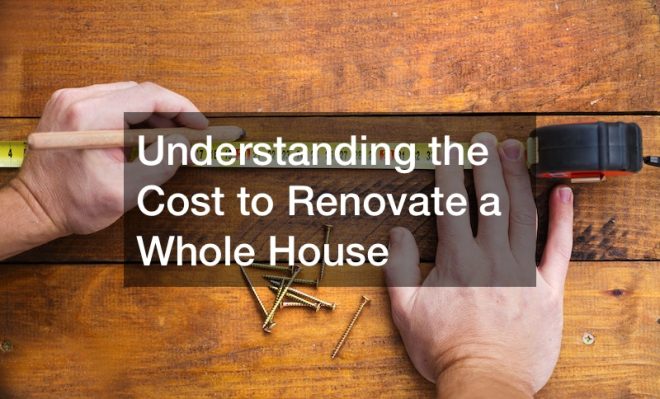
One of the most important decisions you make when building a home is what type of roof to install. When you are buying a new roof for your home, there is a lot that you need to consider. Nowadays, people can use several materials to build houses, but cold climates can cause many different problems when it comes to roofing. People are constantly shivering due to the frigid temperatures outside, making their insides feel even colder. The space becomes devoid of sunlight. The following is a guide to help you determine the best roof for cold climate.
Wood Shingles

You may consider installing wood shingles when seeking the best roof for cold climate areas. Wood shingles have become more prevalent in recent years. More information has been found on using wood shingles under varying weather conditions than previously known. These shingles are an excellent choice for a roof for homeowners who live in freezing climates.
Cold climate regions have temperatures below 55 degrees most of the year, with dry conditions during the summer. The idea behind using wood shingles as the best roof for cold climate regions is that they can help make homes more energy efficient. Using these shingles during a roof replacement or installation will come in handy in retaining heat. Wood shingles also reduce the amount of solar radiation reflected into space. As a result, they help to keep homes warmer.
The shingles can also store more heat from the sun and reflect it into the home during the day. You can be sure your roof will be long-lasting by engaging experienced roofers to install wood shingles. These shingles also require little maintenance. The main advantage of considering these shingles as the best roof for cold climate areas is that wood shingles warm up quickly in cold weather. Other shingles can take days or even weeks before they become effective in retaining heat.
Wood shingles are an excellent choice for a roof in cold climates because they are long-lasting and require little maintenance. The shingles are more aesthetic than other roofs, such as asphalt or tile. Choose residential roofing services that will install wood shingles over plywood or concrete substrates. The best way to know if wood shingles will work for your situation is to first do an energy audit at home.
It is best to avoid mounting them directly over asphalt or tile used for the roof deck. Wood shingles provide a comfortable environment for the home when you use them correctly. They are also less expensive than most other types of roofs. For this reason, wood roofing is even more appealing to homeowners. You can use wood shingles as a sealant to help make roofs much more water-tight and reduce the water build-up.
Asphalt Shingles

An asphalt roof is also ideal when seeking the best roof for cold climate regions. Plus, asphalt is more cost-effective than these other options. If you choose asphalt shingles for your home in a cold climate, ensure you get professional installation roofing services. Hiring a contractor with experience installing shingles on homes requires thick insulation and extra ventilation to combat condensation problems.
Asphalt shingles are likely to be more expensive than other types of shingles. Factors that may impact their price include the quality of the asphalt used to make them and the fact that they are generally thicker than other types of shingles. Asphalt roofing is the best for cold climate areas if you want a roof that lasts longer than 15 years. The roof is much more environmentally-friendly than metal roofing.
You should consider a few factors if you want to go with a traditional roof installation. Asphalt requires very little maintenance, which means it will pay for itself over time. During an asphalt roofing installation on your home, you should also consider installing solar power panels. The panels will provide free electricity for your home. With cold climates comes snow and ice. These elements can be problematic for any roofing material if not adequately prepared.
Options for residential re-roofing are quite a bit different than those for commercial or industrial buildings. Other considerations before the installation include the steepness of your roof line, the direction it faces, how much snow it blocks, and what kind of snow is expected in your area. In addition to these factors, shingle grade is important with houses. It’s because of stricter fire code standards for wood-shake roofs.
Regardless, asphalt shingles may be the best roof for cold climate regions. It combines an excellent look and durability in homes with low needs for maintenance. Commercial and industrial roofing must withstand the rigors of intense weather. It includes hail damage, rain-related leaks, and the heaving of heavy loads. In contrast, residential roofing is typically designed for colder climates.
Often this means using materials such as asphalt shingles or clay and cement tile. Asphalt shingles have a life expectancy of 20 to 40 years, depending on where you live. It makes them a popular choice for many homeowners. It is also easy to install and can be used on flat or pitched surface roofs.
Metal Roof

Homeowners use many kinds of roofs to keep their houses warm. Depending on where people live, a sturdy metal roof is often the best for cold climate areas. A metal roof will reflect heat and radiate it back inside the house. In turn, it is handy in keeping it warm for winter. In addition, metal roofs are usually cheaper than other types of roofs. After your local roofer correctly installs the roof, metal roofing will not wear out from weather conditions or age like hardwood or tile roofs.
There are advantages and disadvantages of all types of roofs. Still, most people will go with something cheap and easy like a plastic or rubber roof because it works and does not cost too much money. It’s not the case with metal roofs. On the market, many kinds of metals are used for roofs, for instance, zinc, aluminum, steel, and more. Each metal roof has its pros and cons that range from durability to price to the cost of maintenance. When buying a new metal roof, you must consider many factors to ensure that it is the best fit for your house and climate.
The best roof for cold climate homes is usually one that can withstand the elements and chemicals not necessarily found in all weather zones around the world. The maintenance cost for metal roofs is very high compared to other roofs. That is usually because of the metal it is made of. The material will also affect how long the roof will last as well. For example, zinc roofs usually are easier to maintain than steel roofs’ weather resistance qualities, and their price tag more than makes up for their maintenance costs.
These roofs are the perfect choice for a cold climate. Most rain and snow tend to fall when the temperature is below freezing. The metal roof will protect the house beneath it from being cracked or broken. As a result, it will save people money on repair costs. Metal roofing also prevents water from getting into the house, which is a big problem in homes with other roofs.
Tile Roof

Tile roofs are an excellent choice for cold climate areas. They protect the home from wind, salt, and other elements in the winter months. Given this protection, tile roofs can last twice as long as asphalt or metal roofs. These roofs provide excellent insulation regardless of where you live during the warmer months due to their heavy weight and thick massiveness. The thick mass of the tiles insulates your home from below and above.
Some tile materials, especially clay tiles, are excellent insulators. They have been used for centuries in colder countries. In most cases, installing tile roofing on your home will be one of your best decisions. It has many advantages over other types of roofing, such as metal and asphalt. First is longevity. Tile roofing can last up to 50 years or more, even longer in some cases. The second advantage is that this roofing is the most energy-efficient of all the roofing materials available today.
The appearance of roofing is one of, if not the most crucial, aspect of your home’s exterior. This is why a tile roof is so popular among homeowners who want their homes to appear as beautiful as possible. Tile roofs are also an excellent choice for keeping up with the appearance of your home’s overall aesthetics. Whether looking for a classic look or something more modern, a tile roof may be the best option.
When you sell your home, you will be able to recoup more of your original investment with tile roofing than if you had chosen a different type of roof. The most significant advantage of tile roofs is that they offer excellent insulation and are durable. They last a much longer time than asphalt shingles over an extended period. Tile roofs also provide the best protection from rain, hail, and snow in these areas.
Just make sure that your contractor is experienced in working with tile roofing materials. It is advisable to hire a roofer that can provide you with the most significant value for your money. Tile roofs tend to be a bit more costly than asphalt shingles. Still, the longevity of tile roofs and the fact that they are less prone to leaking in any way, shape, or form make them a good roofing option.
Rubber Roofing

Rubber roofing may be your answer when searching for the best roof for cold climate settings. Rubber roofs, also known as EPDM (ethylene propylene diene monomer) roofs, are an excellent choice for many homes. These roofs are resistant to extreme temperatures in all climates. They are also fireproof and resist leaks. Rubber roofing can be a cost-effective way to keep your home warm in the winter and cool in the summer.
It is also very durable against hail damage. For this reason, it is an excellent choice for homes near golf courses or other areas with high levels of hailstorm activity. EPDM rubber roofing designs are suitable for harsh winter climates. The roof works by creating a warm air layer in between the roof and icy cold snow. It also creates an effective barrier that prevents leaks and damage to the surface of your home.
You should typically install rubber roofing at least two inches over the existing roof surface to achieve this. A quality rubber roof will have an air space between three and six inches thick when the temperature drops below 32 degrees Fahrenheit (0 degrees Celsius). The thicker the layer of air, the more effective it will trap heat inside your attic and keep it from leaking through your home’s exterior walls.
A rubber rooftop is a cold climate product indeed. It is the best roof for cold climate areas, especially in homes with air conditioning. Without insulation, a rubber roof will pull heat from your home, even in the summer. It can also prevent condensation on the walls and ceilings of your home, which can cause mold and damage to your walls and ceilings.
Today, in the coldest climates, more homeowners are choosing rubber roof coating over asphalt shingles or metal. The rubber performs well under high winds, snow, and ice loads. It is water friendly and resists ice build-up and frost heave. Still, you must add an air gap to prevent ice from forming on the roof sheathing. You may also integrate waterproof membrane layers beneath the sheathing or underlayment.
A roof is the most significant part of your home’s exterior. It is also an essential consideration when looking for a place to live. The climate where you live should play heavily in your mind when selecting what type of roofing materials are best for you. The best roof for cold climate areas is a quality roofing system that can cope with freezing temperatures and snow loads.



